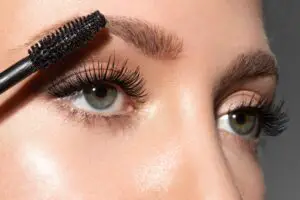Foundation oxidisation is a common problem that many people face.
It occurs when the foundation reacts with the air and turns a shade darker. This can be frustrating for those who have spent time and money finding the perfect shade of foundation, only to have it change colour after a few hours of wear.
There are a few reasons why foundation oxidises. One of the most common reasons is the pH level of the skin. If the pH level is too high or too low, it can cause the foundation to oxidise.
Another reason is the type of foundation being used. Some foundations contain ingredients that are more prone to oxidisation than others.
To prevent foundation oxidisation, there are a few things that can be done. Firstly, it’s important to choose a foundation that is suitable for your skin type.
If you have oily skin, choose a foundation that is oil-free and mattifying. If you have dry skin, choose a foundation that is hydrating and contains moisturising ingredients.
Secondly, make sure your skin is well-prepared before applying foundation. This includes cleansing, toning and moisturising.
Finally, consider using a primer before applying foundation. A primer can help to create a barrier between the skin and the foundation, preventing oxidisation from occurring.
What is Foundation Oxidation?
Foundation oxidation is a common problem that occurs when the foundation makeup shade changes over time. This happens when the foundation reacts with the air and the skin’s natural oils, causing it to darken and turn orange or yellow.
The oxidation process occurs due to the presence of iron oxide in the foundation. When exposed to air and moisture, the iron oxide in the foundation reacts and causes it to change colour.
This can be frustrating for those who have spent time and money finding the perfect foundation shade, only to have it change on them over time.
Foundation oxidation can also occur due to the pH level of the skin. If the skin is too acidic or too alkaline, it can cause the foundation to oxidise and change colour.
This is why it’s important to maintain a healthy pH level of the skin by using appropriate skincare products.
Causes of Foundation Oxidation
Foundation oxidation is a common problem that many people face. It can happen due to a number of reasons, including:
- Exposure to air: When foundation is exposed to air, it can cause oxidation. This is because the oxygen in the air reacts with the foundation, causing it to break down and lose its colour.
- Exposure to sunlight: Sunlight can also cause foundation to oxidise. This is because the UV rays in sunlight can break down the foundation and cause it to lose its colour.
- Chemical reactions: Sometimes, the chemicals in your skincare products can react with the foundation, causing it to oxidise. This is more likely to happen if you use products that contain ingredients like retinol or vitamin C.
- Moisture: Moisture can also cause foundation to oxidise. This is because the water in the moisture can react with the foundation and cause it to break down.
It’s important to note that not all foundations are created equal. Some foundations are more prone to oxidation than others. For example, foundations that contain iron oxide are more likely to oxidise than those that don’t.
To prevent foundation oxidation, it’s important to store your foundation properly. Keep it in a cool, dry place away from direct sunlight and moisture. You should also make sure to shake your foundation well before using it, as this can help to prevent oxidation.
Signs of Foundation Oxidation
Foundation oxidation is a common problem that can occur due to various reasons such as exposure to sunlight, humidity, and other environmental factors. Here are some of the signs that indicate foundation oxidation:
- Discoloration: One of the most common signs of foundation oxidation is discoloration. The foundation may turn yellow, orange, or even brown due to oxidation.
- Cracks: Another sign of foundation oxidation is the appearance of cracks. These cracks may be small or large and can occur on the surface or deep within the foundation.
- Flaking: Flaking is another common sign of foundation oxidation. The foundation may start to flake or peel off due to oxidation.
- Unevenness: Foundation oxidation can also cause the foundation to become uneven. This can lead to problems such as sagging or sinking.
If you notice any of these signs, it is important to take action immediately to prevent further damage. The longer you wait, the more difficult and expensive it will be to repair the damage.
Preventing Foundation Oxidation
Foundation oxidation can be prevented by following some simple steps:
- Choose a foundation that matches your skin tone and type. Test the foundation on your jawline to ensure it matches your skin tone. If it matches, then apply it all over your face. If it doesn’t, then try a different shade.
- Apply a primer before applying foundation. A primer will help to create a barrier between your skin and the foundation, preventing oxidation.
- Avoid using too much foundation. Over-application of foundation can cause oxidation. Use a light hand and build up coverage gradually.
- Set your foundation with a powder. Setting your foundation with a powder will help to prevent oxidation and keep your foundation looking fresh for longer.
- Avoid touching your face throughout the day. Touching your face can transfer oils and bacteria onto your skin, causing oxidation and breakouts.
By following these steps, you can prevent foundation oxidation and keep your makeup looking fresh and flawless all day long.
So, How Do You Avoid Foundation Oxidisation
Foundation oxidation can be a frustrating problem for many people. It can cause your makeup to look patchy, uneven, and unflattering.
Fortunately, there are steps you can take to prevent it from happening.
First, it’s important to choose the right foundation for your skin type. If you have oily skin, look for oil-free or mattifying formulas.
If you have dry skin, opt for hydrating or moisturising foundations. It’s also a good idea to use a primer before applying your foundation, as this can help to create a smooth, even base for your makeup.
Another way to prevent foundation oxidation is to avoid using too much product. Applying too many layers of foundation can cause it to break down and oxidise more quickly. Instead, start with a small amount of product and build up coverage gradually if needed.
Finally, make sure you’re storing your foundation correctly. Keep it in a cool, dry place away from direct sunlight and heat sources. This can help to extend the life of your foundation and prevent it from oxidising too quickly.

I’m Jennifer a beauty and wellness expert. I believe in promoting a sustainable and healthy lifestyle from within. Helping people feel good is my passion; whether it’s teaching yoga or offering skincare advice.







